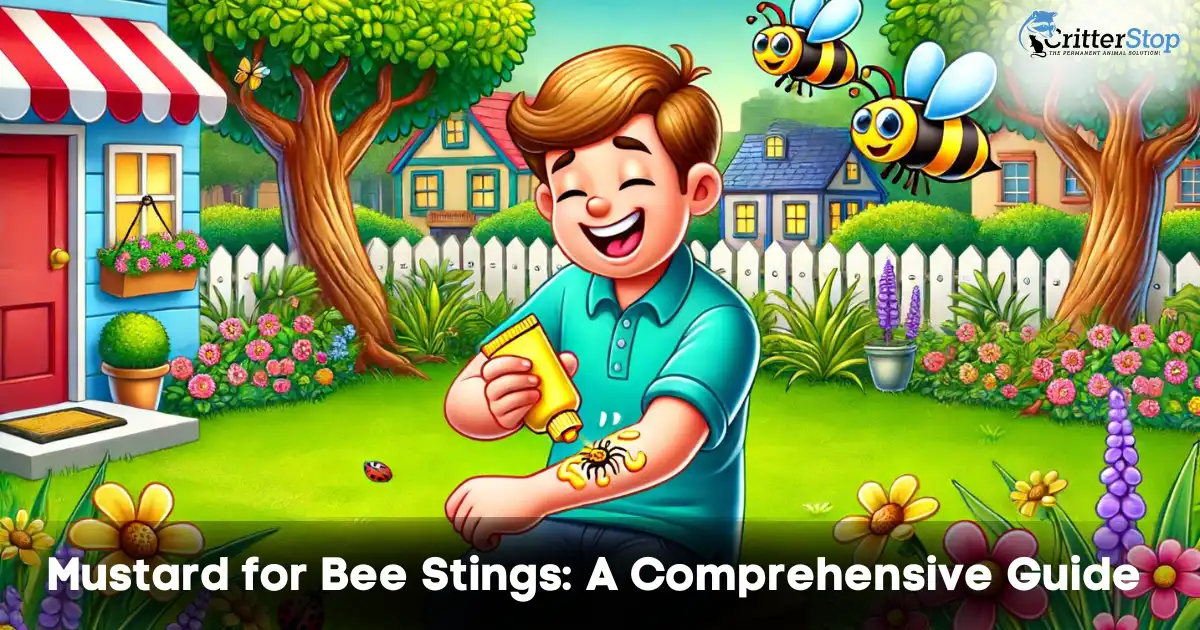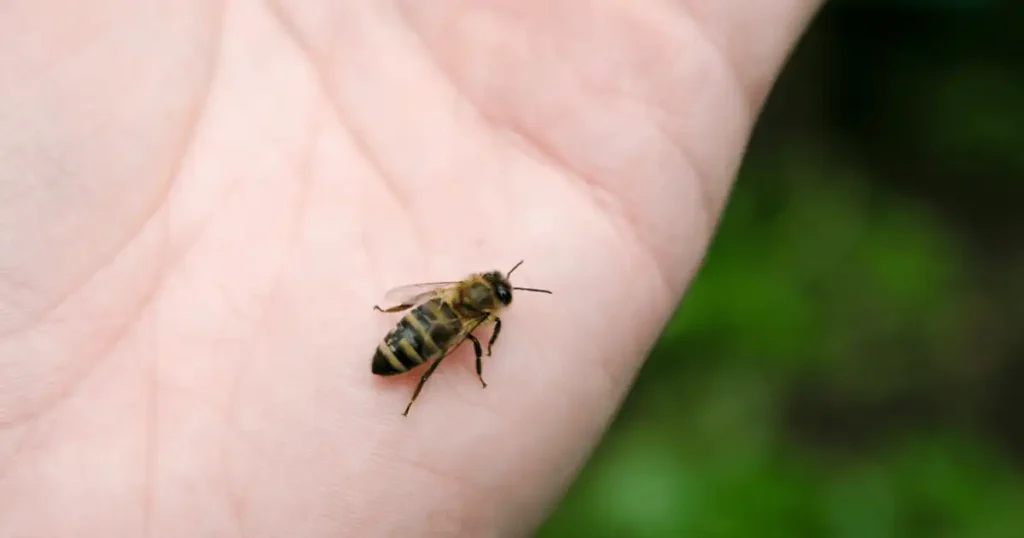
Bee stings can be a painful and distressing experience, often causing swelling, redness, and intense itching. While there are many traditional and modern remedies available, one surprising household item that has been gaining attention for its effectiveness in soothing bee stings is mustard. In this article, we will explore the benefits of mustard for bee stings, how to use it effectively, and why it works. Our comprehensive guide will provide detailed insights into this natural remedy, helping you make informed decisions about bee sting treatment.
Bee stings are a common occurrence, especially during warmer months when bees are more active. For those who spend a lot of time outdoors, whether gardening, hiking, or simply enjoying nature, understanding how to effectively treat a bee sting is crucial. Mustard, with its unique combination of anti-inflammatory, analgesic, and antimicrobial properties, offers a simple yet powerful solution.
Not only is it readily available in most households, but its application is straightforward, making it an accessible remedy for immediate relief. This guide aims to empower you with the knowledge to confidently address bee stings using mustard, ensuring you can swiftly alleviate discomfort and promote healing.

Mustard is not only a popular condiment but also a potent natural remedy for various ailments, including bee stings. The active ingredients in mustard, such as acetic acid, zinc, and selenium, possess anti-inflammatory and analgesic properties that can help alleviate pain and reduce swelling. Additionally, mustard seeds contain compounds like isothiocyanates, which have been shown to have antimicrobial effects, potentially preventing infection at the sting site.
One of the primary reasons mustard is effective for bee stings is its anti-inflammatory properties. When applied to the sting area, mustard can help reduce the swelling and redness associated with the sting. This is crucial in minimizing discomfort and promoting faster healing.
Bee stings cause intense pain that mustard's analgesic properties can instantly alleviate. The cooling sensation of mustard paste can numb the affected area, making the pain more bearable.
Bee stings can sometimes lead to secondary infections if not treated properly. Mustard's antimicrobial properties can help prevent infections, ensuring that the sting heals without complications.

Using mustard for bee stings is straightforward and requires minimal preparation. Here is a step-by-step guide to using mustard effectively:
Another effective method is to use a mustard compress. Soak a clean cloth in mustard paste and apply it to the sting area. This method can be particularly useful for larger sting sites or when dealing with multiple stings.
Mustard oil, derived from mustard seeds, can also be used to treat bee stings. Its anti-inflammatory and analgesic properties make it an excellent alternative. Simply massage a few drops of mustard oil into the sting site for relief.
Combining mustard powder with honey creates a powerful paste that can soothe bee stings. Honey itself has antibacterial properties, and when combined with mustard powder, it enhances the healing effects. Apply the paste to the sting site and cover it with a bandage.

While mustard is highly effective, there are several other natural remedies that can provide relief from bee stings. Here are a few worth considering:
Baking soda is a well-known remedy for bee stings due to its alkaline nature, which helps neutralize the venom. Mix baking soda with water to form a paste and apply it to the sting site.
Apple cider vinegar can help reduce pain and swelling by neutralizing the venom. Soak a cotton ball in apple cider vinegar and apply it to the sting area for relief.
Aloe vera is renowned for its soothing and healing properties. Apply fresh aloe vera gel to the sting site to reduce inflammation and promote healing.
Lavender essential oil has anti-inflammatory and analgesic properties. Dilute a few drops of lavender oil with a carrier oil and apply it to the sting site for relief.

Mustard's soothing properties are not limited to bee stings. It can also be used as a first-aid treatment for minor burns. The cooling sensation and anti-inflammatory properties of mustard can help alleviate pain and prevent blistering when applied immediately after a burn occurs. Here’s how to use mustard for burns:
Muscle pain and cramps can be alleviated with the application of mustard. Mustard's heat has the ability to deeply penetrate the muscles, relieving stiffness and soreness. Here’s a method to use mustard for muscle pain:
Mustard contains vitamins A, C, and K, along with omega-3 fatty acids, which can help in treating acne. Its anti-inflammatory properties reduce redness and swelling, while its antimicrobial properties help prevent infections. To use mustard for acne:
The anti-inflammatory properties of mustard can provide relief from psoriasis and eczema. Mustard oil, in particular, can help moisturize and soothe the skin. Here’s how to use it:
Mustard oil is rich in vitamins and minerals that can stimulate hair growth and prevent hair loss. The high content of fatty acids nourishes the scalp and strengthens hair follicles. To use mustard oil for hair growth:
Mustard oil’s antimicrobial properties make it effective in treating dandruff. Regular application can reduce flakiness and itchiness of the scalp.
While mustard is a powerful topical remedy, its nutritional benefits when consumed are equally impressive. Mustard seeds and mustard greens are rich in essential nutrients that contribute to overall health.
Mustard seeds contain high levels of antioxidants, which help fight free radicals in the body, reducing oxidative stress and lowering the risk of chronic diseases.
Mustard greens are an excellent source of dietary fiber, which aids in digestion and helps maintain a healthy weight.
Mustard is loaded with essential vitamins and minerals, including vitamin A, vitamin C, vitamin K, calcium, and magnesium, all of which are vital for maintaining good health.
The omega-3 fatty acids found in mustard seeds can help reduce inflammation and lower the risk of heart disease.
The high levels of vitamin C in mustard greens boost the immune system, helping the body fight off infections more effectively.
Yes, mustard is believed to help with bee stings due to its anti-inflammatory properties. Applying mustard to a bee sting can help reduce swelling and alleviate pain. The mustard's acidic nature may also help neutralize the venom.
Indeed, mustard can help with bee stings. The active ingredients in mustard, such as acetic acid, can provide relief by reducing the sting's intensity and soothing the affected area. It acts as a natural remedy to lessen the pain that the sting causes.
You should leave mustard on a bee sting for about 15-20 minutes. After applying a thin layer of mustard to the affected area, allow it to sit and work on reducing the pain and swelling. Rinse off the mustard with cool water once the time is up, and repeat the process if necessary for continued relief.
Mustard is an effective and accessible remedy for bee stings, offering anti-inflammatory, analgesic, and antimicrobial benefits. Whether you use mustard paste, mustard oil, or a combination of mustard powder and honey, this natural remedy can provide significant relief from the pain and swelling caused by bee stings. However, it is crucial to monitor for severe symptoms and seek medical attention if necessary.
While mustard and other natural remedies can be effective for mild to moderate bee stings and other conditions, it's important to know when to seek professional help. If you experience severe symptoms such as difficulty breathing, swelling of the face or throat, dizziness, or a rapid heartbeat, seek emergency medical care immediately. These symptoms may indicate a severe allergic reaction, known as anaphylaxis, which requires prompt treatment.
For any pest control issues or wildlife intrusions, it's best to call in the professionals. Critter Stop offers expert, humane wildlife removal services.
With a fantastic reputation and excellent customer reviews, Critter Stop provides high-quality work and outstanding customer service, ensuring your home is safe and critter-free.
For any residential pest control needs, consider reaching out to Critter Stop. They are a trusted name in wildlife removal and pest control, providing humane and efficient services to keep your home safe.
Contact us at (214) 234-2616 to get a free estimate of our services.
Visit our Critter Library and learn more about our furry friends